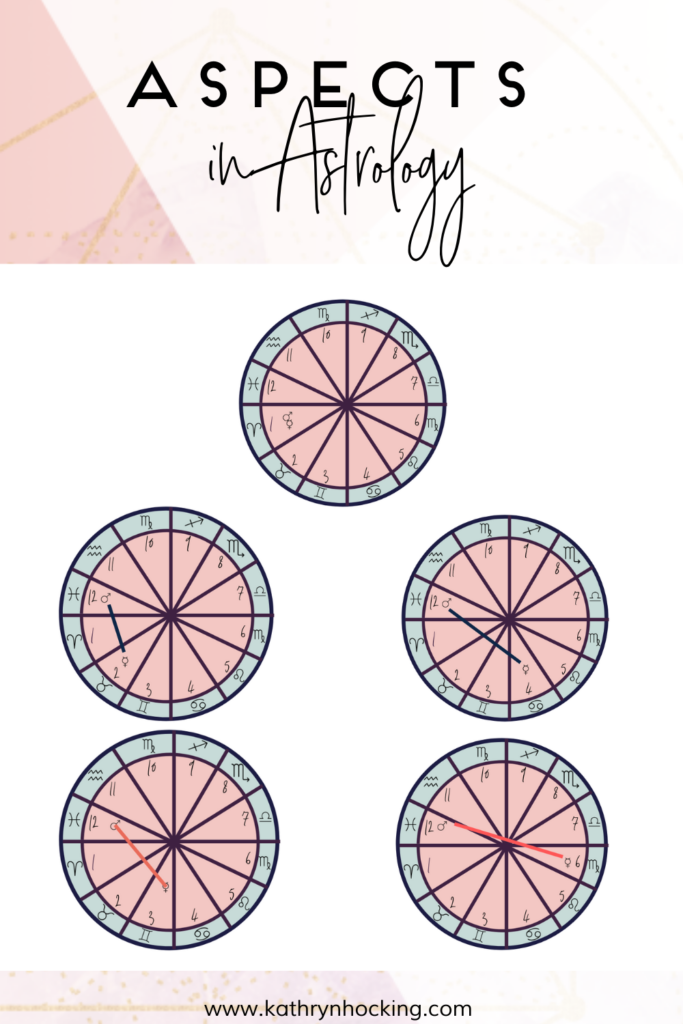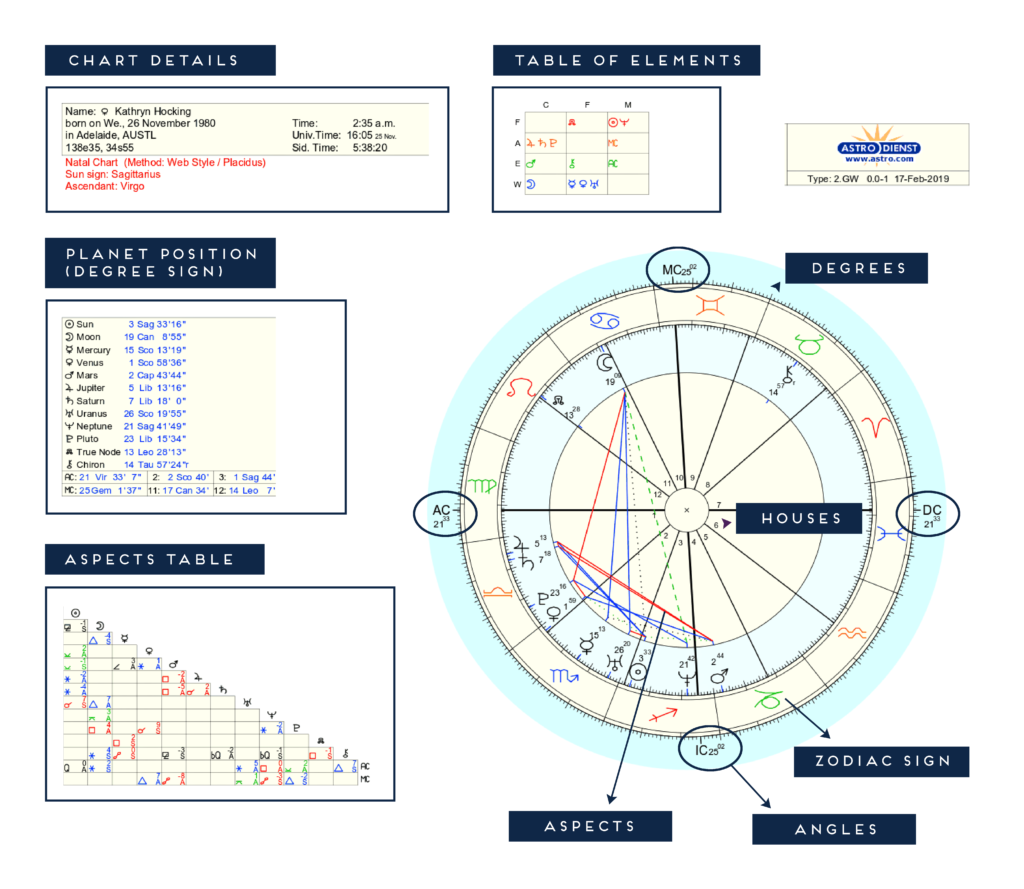
Aspects are one of the concepts of Astrology that my students struggle most to get their heads around, mainly because they involve understanding the degrees of separation between the different planets in their chart and it can get a little mathematical.
So let’s break it down!

Introduction to Astrological Aspects
Aspects are when certain planets in your chart are a specific distance from each other in the chart within a certain orb (allowance) of degrees.
For example, an opposition aspect is 180 degrees with an orb or allowed deviation of degrees of 5-10 degrees. This means that if you have planets 170-190 degrees apart they can be considered in opposition.
But what does this actually mean? Well, each type of aspect denotes a certain relationship between those planets – i.e. how they relate and interact. Ultimately they indicate how well (or otherwise) they get along.
Summary of the Major Aspects

Conjunction
Planets in Conjunction are 0-5 degrees apart with an orb of 10 and the planets involved amplify and merge which can be positive (working well together) or negative (creating a blindspot).
Opposition

Planets in opposition are 180 degrees apart with 10 degrees orb and the planets involved create polarity or deep tension and frustration if not integrated.
Trine

Planets that are Trine are 120 degrees apart with 10 degrees orb and the planets involved are in Harmony. There is a positive flow of energy that brings luck and opportunities and shows us where our natural talents lie.
Square

Planets that are square are 90 degrees apart with an orb of 10 degrees and the planets involved create tension. The energies of the planets conflict and create restrictions and obstacles however, it can produce productivity through dynamic tension to integrate.
Sextile

Planets that are sextile are 60 degrees apart with an orb of 6 degrees and the planets involved have an easy flow of energy and are aligned.
Major or Minor Aspects
There are major and minor aspects in Astrology but I generally only consider the Major aspects of Conjunction, Square, Opposition, Sextile and Trine when teaching astrology and doing astrology readings.
When you bring in the minor aspects it can become overwhelming for the client and detracts from the most significant issues and themes.
Interpreting an Aspect
When interpreting an aspect looking at the zodiac signs and houses that the involved planets are in are just as important as the type of aspect.
Aspects bring your chart to life and demonstrate recurring patterns, challenges and strengths.
It is important to remember that we all have challenging aspects (oppositions and squares) and they are important to our human and soul development.
Finding your aspects
In order to find your aspects create your natal astrology chart and look at the aspects table for the intersection of different planets and the associated aspect glyph.
Find your major aspects and look them up in the descriptions above to understand the nature of the aspect.
Typically on your chart, red lines denote challenging aspects and blue lines denote harmonious ones.

An Example of interpreting an Aspect in my chart
I have a Cancer Moon in the 11th house which means that I am sensitive, emotional and nurtured through community.
My Cancer Moon is square Pluto in the 1st house – this means that I have an emotional need to be nurtured through community yet my Pluto seeks to transform through extensive time alone and individuation.
So the challenge (Moon square Pluto) is for me to support both my cancer moon (emotional need for community) and my 1st House Pluto (transformational need for solitude).
Want more?

You can join my FREE course Astrology Basics, get a Natal Chart Reading.
